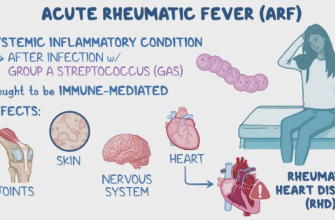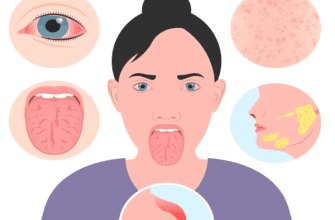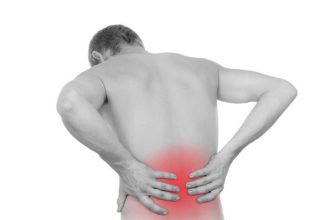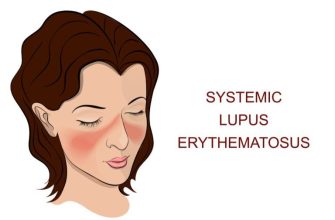Osteoporosis is a metabolic bone disease characterized by low bone mass and deterioration of bone tissue, leading to increased bone fragility and fracture risk. It is often called a “silent disease” because bone loss occurs without symptoms until a fracture happens.
- Etiology (Causes & Risk Factors)
- Primary Causes:
- Secondary Causes (Medical Conditions & Medications):
- Symptoms
- Diagnosis
- 1. Bone Mineral Density (BMD) Test (DEXA Scan)
- 2. Other Tests:
- Treatment
- 1. Lifestyle Modifications
- 2. Medications
- Prevention
- 1. Nutrition:
- 2. Exercise:
- 3. Avoid Risk Factors:
- When to See a Doctor
- How to Avoid Osteoporosis
- Final Note:
Etiology (Causes & Risk Factors)
Osteoporosis results from an imbalance between bone formation and resorption, favoring bone loss.
Primary Causes:
- Aging (natural bone density decline after age 30–35, accelerates after menopause)
- Estrogen deficiency (postmenopausal women at highest risk)
- Low calcium/vitamin D intake (impairs bone mineralization)
- Genetic factors (family history of osteoporosis or fractures)
Secondary Causes (Medical Conditions & Medications):
- Endocrine disorders (hyperthyroidism, hyperparathyroidism, Cushing’s syndrome)
- Chronic diseases (rheumatoid arthritis, CKD, malabsorption syndromes)
- Medications (long-term corticosteroids, proton pump inhibitors, anticonvulsants)
- Lifestyle factors (smoking, excessive alcohol, sedentary lifestyle)
Symptoms
Osteoporosis is often asymptomatic until a fracture occurs. Common signs include:
- Fractures (most common in spine, hip, wrist)
- Loss of height (due to vertebral compression fractures)
- Stooped posture (kyphosis or “dowager’s hump”)
- Chronic back pain (from spinal fractures)
Diagnosis
1. Bone Mineral Density (BMD) Test (DEXA Scan)
- Gold standard for diagnosis (measures T-score)
- Normal: T-score ≥ -1
- Osteopenia (low bone mass): T-score -1 to -2.5
- Osteoporosis: T-score ≤ -2.5
2. Other Tests:
- FRAX Tool (estimates 10-year fracture risk)
- X-rays (if fractures suspected)
- Lab tests (calcium, vitamin D, PTH, thyroid function)
Treatment
1. Lifestyle Modifications
- Calcium-rich diet (dairy, leafy greens, fortified foods)
- Vitamin D supplementation (sun exposure, supplements)
- Weight-bearing exercise (walking, resistance training)
- Fall prevention (balance exercises, home safety)
2. Medications
- Bisphosphonates (alendronate, zoledronic acid) – first-line
- Denosumab (monoclonal antibody, inhibits bone resorption)
- SERMs (raloxifene – for postmenopausal women)
- Teriparatide/Abaloparatide (anabolic – stimulates bone formation)
- Hormone Replacement Therapy (HRT) (for postmenopausal women, but risks must be considered)
Prevention
1. Nutrition:
- Calcium (1,000–1,200 mg/day)
- Vitamin D (600–800 IU/day, or more if deficient)
2. Exercise:
- Weight-bearing (walking, jogging)
- Strength training (resistance exercises)
3. Avoid Risk Factors:
- Quit smoking
- Limit alcohol
- Reduce fall risks (remove rugs, improve lighting)
When to See a Doctor
- Postmenopausal women & men >50 with risk factors
- Unexplained fractures or height loss
- Chronic steroid use (≥3 months)
- Family history of osteoporosis/hip fractures
How to Avoid Osteoporosis
- Start prevention early (peak bone mass is reached by age 30)
- Regular exercise (especially in adolescence & young adulthood)
- Monitor bone health (DEXA scan if high-risk)
- Treat underlying conditions (e.g., hyperthyroidism, malabsorption)
Final Note:
Osteoporosis is preventable and manageable with early intervention. If you have risk factors, consult a doctor for screening and personalized advice.







